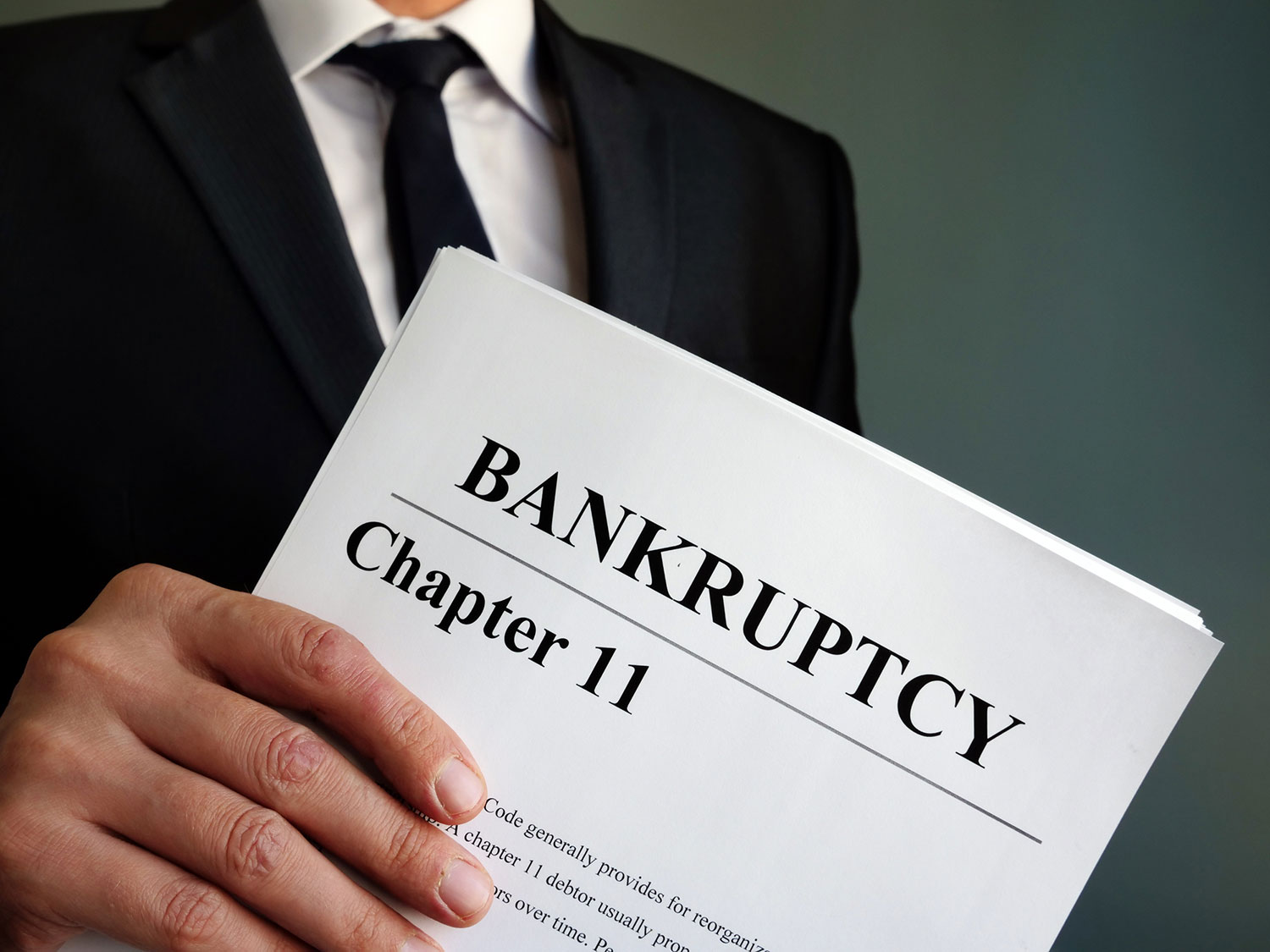Very few people can say that they’ve never run into financial difficulty at some point in their life. When this does happen, you may be able to dig yourself out of debt by cutting down on spending, increasing your income, or borrowing money from friends and family. However, there can be circumstances when your only choice is to seek real debt relief by filing for bankruptcy. And, although the term “bankruptcy” can have a negative connotation in much of society, the reality may surprise you. Most people are unaware of the different types of bankruptcy that are available to help them get out of debt.
Top Debt Relief Options
Types of Personal Bankruptcy
- Chapter 7 Bankruptcy
- Chapter 13 Bankruptcy
- Chapter 11 Bankruptcy
Once you fully understand your options when it comes to declaring bankruptcy, you will be better equipped to take control of your personal finances and start working toward a debt-free future. By learning upfront about the bankruptcy basics before reaching out to an attorney, you will be better prepared for the entire process and have a clear idea of what to expect.
How Does Personal Bankruptcy Work?
When it comes to personal bankruptcy, you will likely decide between filing Chapter 7 bankruptcy or Chapter 13 bankruptcy. In rare cases, an individual debtor may qualify for Chapter 11 bankruptcy, though this type is more commonly used by businesses. All filings are processed through the United States bankruptcy court and are subject to federal rules since bankruptcy law is dictated by United States code, not individual states. Many people find it necessary (or simply much easier) to work with a bankruptcy lawyer for help through this process, though it can technically be done on your own (called filing “pro se”).
As an individual, when you decide to file for personal bankruptcy, you will start by making a formal request to a federal bankruptcy court to discharge your debts (meaning you won’t be held liable for repayment anymore). This process begins with filing a petition with a local bankruptcy court and with it you will need to include a considerable amount of personal financial information from tax returns to bank statements to pay stubs.
Once your application has been received, the courts will put an automatic stay on your accounts. This is a legal injunction that states that no creditor can pursue debt collection against you while the bankruptcy proceedings are happening. This means they must cease all contact and all efforts to collect on outstanding debt. It also means that any wage garnishments that are currently in place must be lifted.
Before a judge will consider your bankruptcy case, you will also be required to attend a course in credit counseling and debtor education. After this, a meeting will be set up with a bankruptcy trustee who will ask you questions about your finances and debts and how you’ve attempted to pay them off. If they accept your account and believe you will be a good candidate, they will approve your bankruptcy discharge, though this process can take anywhere from several weeks to several months to complete. Importantly, no matter which bankruptcy Chapter you pursue, there will still be some debts you’re still responsible for paying that we’ll outline below.
What Are the Types of Bankruptcy an Individual Can File?
Chapter 7 Bankruptcy

How It Works
Chapter 7 is the most common bankruptcy procedure in the country. You may hear Chapter 7 called “liquidation bankruptcy” because you will be required to liquidate (sell off) any assets that aren’t exempt and use these proceeds to pay off creditors. Exempt assets are typically any personal property that’s considered necessary such as a car, furniture, clothing, or sometimes a home. After this initial liquidation is complete and creditors have received payment, any remaining approved debts will be discharged. This could include medical bills, credit card debt, or personal loans, but it does not include any back taxes, student loans, or debt obligations like alimony or child support.
There are also income requirements since Chapter 7 is mostly a tool for low and mid-income individuals. To qualify, your regular income averaged over six months must be less than the median income in your state of a same-sized household. If you’re over this amount, you may have to consider filing Chapter 13. Chapter 7 also gives people the option to reaffirm a secured debt (ie. a debt that’s tied to collateral property like a home or car loan). For example, if a debtor was concerned they might have to sell their car because of its high value, they could reaffirm the debt and make a plan directly with the creditor for repayment to avoid liquidation.
Pros and Cons
Perhaps the biggest benefit of Chapter 7 is how fast it can be completed. Most people find from start to finish the process can be completed within four to six months since you don’t have to structure a repayment plan with the courts. It’s also preferable for those who want a clean slate after the bankruptcy process is complete.
On the other hand, it does require you to liquidate any non-essential assets which could mean you will have to give up property in exchange for debt discharge relief. The specific assets that must be liquidated will vary from state to state and it’s always best to consult with a bankruptcy attorney if you’re concerned about this. That said, the vast majority of Chapter 7 filings (over 95%) do not have to sell any assets, so much so that most of these filings are considered “no asset” cases.
Who is it best for?
Although both businesses and individuals can file Chapter 7, it’s most often used by a single debtor who’s looking to get out of consumer or medical debt. It’s also best for those who don’t have a lot of assets since you will be required to sell off anything that’s not deemed essential. If you do have a lot of assets you want to protect, you should consider another form of bankruptcy protection.
Chapter 13 Bankruptcy

How It Works
Chapter 13 bankruptcy is commonly used for an individual or a sole proprietor of a business. It’s also called a “reorganization bankruptcy” or a “wage-earner” plan because it’s mostly used by those who have a regular and reliable source of income but need help structuring a payment plan so they don’t fall deeper into debt. With this type of restructuring, an individual is allowed to keep more of their assets, but instead of having their outstanding debts discharged, they structure a payment plan with the court over the course of three to five years. During this time, if the debtor maintains regular payments, their assets will not be at risk and any foreclosure proceedings will be stopped.
Once the payment period is over and the debtor has made all payments, any remaining unsecured debt will be discharged. Like Chapter 7, this will not affect certain debts like taxes, student loans, or child support.
Pros and Cons
The biggest draw of Chapter 13 is that it allows you to keep most of your assets, even those that are considered non-essential. This is ideal for those who may have an extra vehicle or who have built up considerable equity in their home and want to protect it. The downside is that it will stay on your credit report for seven years which can make it very hard to take out any new loans or open new lines of credit. Additionally, it can also lower your credit score by 100 to 200 points which can take years to rebuild. It also requires the debtor to be extremely diligent about the agreed-upon payment plan as your budget and spending will be scrutinized by the court during this entire process.
Who is it best for?
Chapter 13 is ideal for those who have a solid income stream (and are above the threshold for filing Chapter 7) and want to prioritize keeping their personal property, but have maybe fallen on hard times keeping up on their payments. These people aren’t in such dire straits that they need to liquidate their assets, but they do need legal help coming up with a plan to pay off debtors. This is not a good plan for someone with an unreliable income or who has a long history of defaulting on debt.
Chapter 11 Bankruptcy

How It Works
Chapter 11 is also a type of reorganization bankruptcy, and while it’s usually used by those to address business debt it can also be used as a personal bankruptcy filing under certain circumstances. As a form of business bankruptcy, it allows a company to continue operating while simultaneously addressing past-due debt with creditors and formulating a payment plan. It also typically requires the business to restructure itself which usually means considerable downsizing.
Pros and Cons
The biggest upside of filing Chapter 11 is that your business stays operational and you can keep generating profits. During this time you can negotiate with your creditors and structure a comprehensive payment plan with the courts that can lead to a stronger, more resilient business model in the future. The downside is that it takes a lot of time and energy which includes working with lawyers and courts, and paying all applicable fees.
Who is it best for?
This type of bankruptcy is almost exclusively used for businesses that have a lot of assets to protect and that can show the court their creditors will be better served by staying in business and continuing to generate revenue than by shutting down completely. However, certain individuals who exceed the Chapter 13 debt limits may qualify for Chapter 11 filing.
What Debt Cannot Be Forgiven?
When you file for bankruptcy, you will typically be able to discharge credit card debt, medical bills, small business debt, attorney fees, past-due rent, some personal loans, past-due utility bills, and accident claims.
However, some types of debt cannot be discharged, most notably student loans, home loans, unpaid taxes, or any debt established by family law such as child support or alimony obligations. For bankruptcy filers wondering how to get out of debt, you should consider working with a debtor education program or credit counseling service to come up with a repayment plan.
When Bankruptcy Is the Right Choice
The current bankruptcy code was never intended as a blanket “get out of jail free” card, and ideally should only be used only after you’ve made a concerted effort to pay off your creditors or develop a debt consolidation plan. But even the most well-intentioned among us will sometimes have no other choice than to file a bankruptcy petition to get them through this difficult time. Although this should never be your first choice, when used correctly, bankruptcy can often be the right choice.






